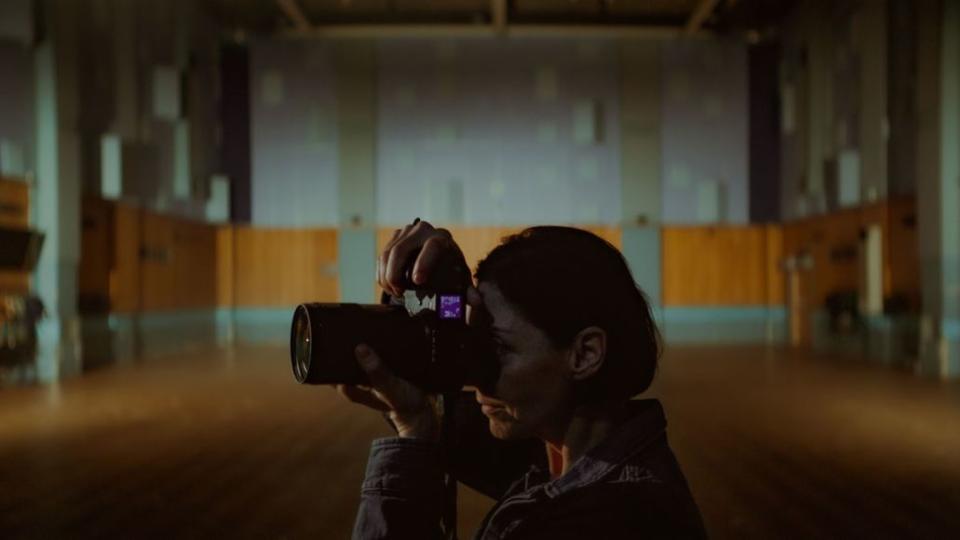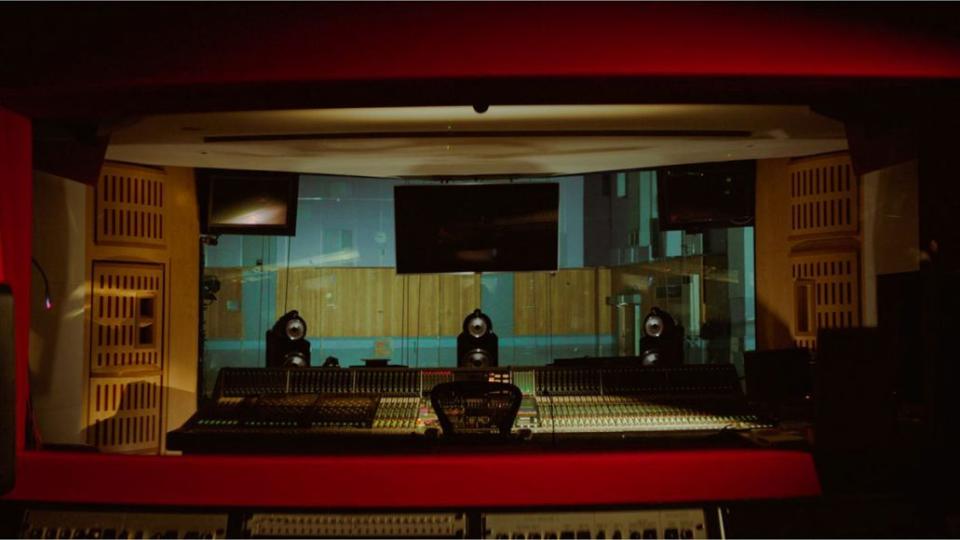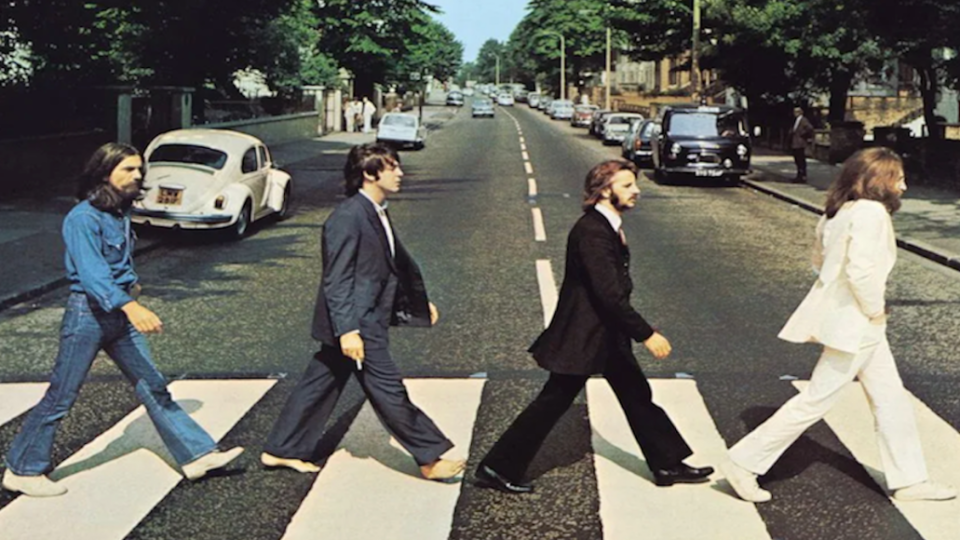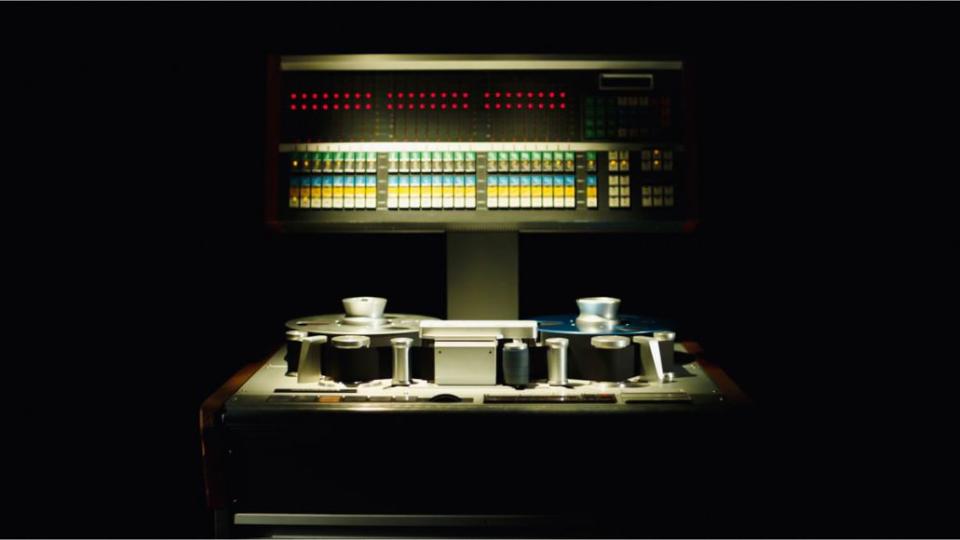If These Walls Could Sing: 5 Things We Learned From the Abbey Road Doc
- Oops!Something went wrong.Please try again later.
- Oops!Something went wrong.Please try again later.
- Oops!Something went wrong.Please try again later.
The post If These Walls Could Sing: 5 Things We Learned From the Abbey Road Doc appeared first on Consequence.
There’s a certain reverence linked with Abbey Road Studios. It’s one of the most famous recording studios on the planet, and a household name, having welcomed such greats as The Beatles, Pink Floyd, John Williams, Oasis, and so many more.
It’s also the namesake of The Beatles’ final — and arguably best — record. Its iconic album artwork, taken on the street opposite the studios, continues to inspire thousands of fans to make a pilgrimage to London themselves and recreate their own tribute.
If These Walls Could Sing is the debut documentary feature by Mary McCartney, daughter of Paul McCartney, and it is her love letter to a recording space that her father still has such an intimate connection with, a place that she herself calls home. Featuring interviews with the musical greats who have created masterpieces in the studio, from her father and Ringo Starr to Pink Floyd’s Dave Gilmour and Roger Waters to Kate Bush, Noel and Liam Gallagher, and Jimmy Page, If These Walls Could Sing is a must-watch for every die-hard music fan.
Read below for our five main takeaways from the If These Walls Could Sing documentary.
01. The McCartneys’ Bond With Abbey Road Keeps Getting Stronger

If These Walls Could Sing (Disney+)
Mary McCartney literally bookends If These Walls Could Sing: In its opening scene, a photograph of her as a baby flashes as she recalls how Abbey Road has been in her life for as long as she can remember. At the end of it, she is seen holding up her phone next to Elton John as they FaceTime her father Paul, in a sweet interaction where John excitedly recounts to the former Beatle how the experience of getting to observe him play “Hey Jude” during a session in the 1960s was one of the greatest moments of his life.
Mary’s heart and soul is poured into the documentary: It is she who conducts interviews with the musical icons linked to the studio, with some forgetting their formalities and telling their personal anecdotes and saying “your dad” (i.e. Paul) or “your mother” (i.e. Linda). It’s because it is Mary who is directing this documentary that these high-profile interviewees take on such comfortable and relaxed personas when they’re being filmed, almost as if they’ve forgotten that they are answering questions for a documentary and simply basking in the sentimentality of yesteryear to a familiar face.
In the Q&A following its NYC premiere at the Metrograph on December 7th, Mary joked about how frustrating it was to keep reminding her interview subjects to keep it general –– but even folks like John can’t help but address a certain someone as “your father” and not “Sir Paul McCartney” as he recalls his most treasured memories.
Having Mary as If These Walls Could Sing’s connective tissue gives it an intimate and original touch. Who better to tell the story of one of the most esteemed recording studios in the world, than through the lens of the daughter of the musician most famously associated with it?
02. Abbey Road Studios Re-Framed the National Perception of Liverpool

If These Walls Could Sing (Disney+)
Liverpool is the birthplace of all four Beatles, and their international success gave the small English city its first real taste of popularity, going as far as to elevate their own local musicians. In particular, Liverpool-born Brian Epstein, who served as The Beatles’ influential manager from 1962 until his death in 1967, was responsible for taking Liverpudlians under his wing and guiding them to fame.
Epstein managed the legendary crooner Cilla Black, as well as Merseybeat group Gerry & the Pacemakers (with both artists having recorded at Abbey Road) whose cover of Rodgers & Hammerstein’s “You’ll Never Walk Alone” is now associated as the official anthem for Liverpool Football Club. Prior to The Beatles’ global domination, musicians from Liverpool were often looked down upon; the instantly-recognizable “Scouse” accent is considered lowly to the rest of England, and the working-class city has never been favored by the monarchy. But with Epstein’s help, he helped alter the attitude towards Liverpool as a whole.
If These Walls Could Sing includes archival footage of Black revealing she did not think she could have gotten to the top without Epstein’s help. She states: “I came from Liverpool. At the time, nobody wanted to know anything about Liverpudlians until Epstein came on the scene. It was a bit of a handicap to anyone who did come from Liverpool, because of the way they spoke.”
Beatlemania started at the Cavern Club and was nurtured at Abbey Road –– all thanks to some Liverpudlians.
03. Everybody Wants to Be The Beatles

The Beatles Abbey Road
Yes, the documentary is about Abbey Road Studios, but The Beatles’ impact means that it’s impossible to discuss the studios without mentioning The Beatles. The two will forever remain intertwined –– how could they not be?
What gives If These Walls Could Sing its character are the musical heroes endlessly waxing lyrical about their fondness and admiration for The Fab Four, such as Gilmour admitting it was the synergy of Abbey Road that made recording Dark Side of the Moon so special and Kate Bush revealing that she had decided to work on Never for Ever at the studio following the release of Abbey Road. These are amazing musicians in their own right, who have produced landmark records on their own, but getting to hear them talk candidly with joy about their passion for The Beatles and how they were inspired them to record their own music at the space is endlessly special.
One of the documentary’s most memorable moments features Liam and Noel Gallagher of Oasis. It’s no secret that Oasis are die-hard Beatles fans, with Noel Gallagher sampling John Lennon’s “Imagine” in the opening bars of “Don’t Look Back In Anger” and Liam insisting that he is the reincarnation of Lennon himself (never mind the fact that Lennon was murdered eight years after Liam was born in 1972). While interviewed separately (as the brotherly duo are infamous for hating each other with a burning passion), getting to watch them discuss their pure, shared love for The Beatles is heartwarming.
Oasis themselves recorded two albums at Abbey Road: Their 1997 sessions for Be Here Now ended with them getting kicked out entirely after spending one boisterous night in the studio, blasting Beatles records from back to back at maximum volume and eventually blowing out a PA system. When they returned a decade later to record what ended up being their final album, Dig Out Your Soul, the band were better behaved; Liam showed up at the studio at 9 a.m. one morning dressed in a fancy hat, saying he’d been up for hours, trying to decide what to wear for his first day at Abbey Road — like an excited child raring to go for his first day of school.
“I’d be the first one here, the last one here,” recounts Liam. “You gotta feel it. You can’t just pop in… you’ve got to let it all seep into your veins, and your soul. It was like going to church, coming into Abbey Road.”
Adds Noel: “A huge, massive part of my record collection was made in this room. My musical language was born in this room. My haircut was born in this room. There was no bigger fan of The Beatles than us… except for maybe The Beatles.”
04. Abbey Road Is a Temple of Synergy, Created by Its Staff
Throughout If These Walls Could Sing, there are endless mentions of Abbey Road being likened to a church, a temple, a sanctuary. The very infrastructure of the recording facilities are obviously an important foundation as to why it’s so deeply revered within musical history, but it’s the synergy and legacy of its halls that truly make it seem like a spiritual, cherished home. Members of Pink Floyd as well as Oasis recount how The Beatles’ influence inspired them not only to record at Abbey Road, but to write music in general, with this kind of ongoing, evolving, reincarnating passion acting like an echo chamber of creativity.
Mary describes how the studio feels like a family; most of the staff began their career there and were encouraged to work their way up. And without the innovative nature of their engineers and technicians, Abbey Road would not enjoy the reputation it has today.
There are some lovely discussions with not just the musical greats that give If These Walls Could Sing an even cozier feel. Orchestra members who were inspired by musicians who had recorded at Abbey Road are interviewed, as well as key members of the studio’s staff, such as technician Lester Smith and studio manager Collette Barber. The brick and mortar that Abbey Road is built on certainly is one aspect of its magical nature, but its true synergy lies in the memories of its hallowed halls, and the lingering harmony of past projects cultivated by the people creating art in it.
“People taught music to me by sharing with me what other people’s music meant in their life,” says Nile Rodgers. “People think there’s some magical thing in Abbey Road. Truth of the matter is just in the artist –– but artists are superstitious, and Abbey Road, in a strange way as soon as we walk in, a lot of that bonding that needs to take place between artist and producer happens almost instantly. I find that Abbey Road is the great leveler in our relationship.”
05. Beatlemania Will Live On, Forever

If These Walls Could Sing (Disney+)
For those who were born way past Beatlemania and find themselves wishing they’d been there during the throes of the ’60s, lining up at record shops for early pressings of Rubber Soul and watching the Fab Four’s Ed Show Sullivan show performance live (this writer included), take comfort in the fact that over half a century later, Beatlemania is still alive and thriving.
Long live McCartney and Starr, who are still recording incredible albums and performing arena tours. Abbey Road and Sgt. Pepper still stand up as some of the finest records of all time, and each new generation will find a lot to love across Revolver; they will find plenty to scream about on A Hard Day’s Night; there are endless moments to treasure within Get Back. The legacy of Abbey Road Studios, and The Beatles, is thus so immortalized by the musicians and bands they inspire, that it is now impossible to find an artist completely devoid of any influence by Paul, Ringo, George, and John; be it in their own music or through someone they were influenced by.
As Liam Gallagher puts it, very earnestly: “Hopefully it’ll be here, for millions of years. It’s a national treasure, innit? You know what I mean?” Because when the day comes, millions of years into the future, when the Earth has been singed to a crisp and humanity as we know it has been eviscerated, it might be reassuring to know that Abbey Road, of all things, will still be left standing.
If These Walls Could Sing is streaming now on Disney Plus.
If These Walls Could Sing: 5 Things We Learned From the Abbey Road Doc
Cady Siregar
Popular Posts

